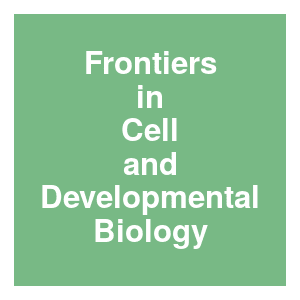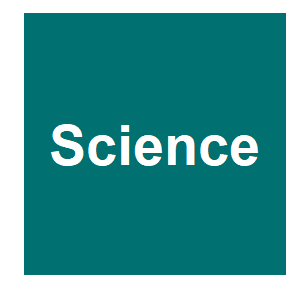
Keywords: Caenorhabditis

|
A Maternal-Effect Toxin Affects Epithelial Differentiation and Tissue Mechanics in Caenorhabditis elegansC. Lehmann and C. Pohl, Frontiers in Cell and Developmental Biology, 9. 2021.
Selfish genetic elements that act as post-segregation distorters cause lethality in non-carrier individuals after fertilization. Two post-segregation distorters have been previously identified in Caenorhabditis elegans, the peel-1/zeel-1 and the sup-35/pha-1 elements. These ... Keywords: Caenorhabditis, elegans, gene drive natural, meiotic drive, selfish DNA, selfish genetic element, toxin antidote |

|
Selfing is the safest sex for Caenorhabditis tropicalisL. M. Noble, J. Yuen, L. Stevens, N. D. Moya, R. Persaud, M. Moscatelli, J. L. Jackson, G. Zhang, R. Chitrakar, L. R. Baugh, C. Braendle, E. C. Andersen, H. S. Seidel and M. V. Rockman, eLife, 10:e62587. 2021.
We generated a chromosomal-scale genome for C. tropicalis and surveyed global diversity. Population structure is very strong, and islands of extreme divergence punctuate a genomic background that is highly homogeneous around the globe. Outbreeding depression in the laboratory is ... Keywords: Caenorhabditis, elegans, gene drive natural, meiotic drive, selfish DNA, selfish genetic element, toxin antidote |

|
Ubiquitous Selfish Toxin-Antidote Elements in Caenorhabditis SpeciesE. Ben-David, P. Pliota, S. A. Widen, A. Koreshova, T. Lemus-Vergara, P. Verpukhovskiy, S. Mandali, C. Braendle, A. Burga and L. Kruglyak, Current Biology, 2021.
Here, we report the discovery of maternal-effect TAs in both C. tropicalis and C. briggsae, two distant relatives of C. elegans. In C. tropicalis, multiple TAs combine to cause a striking degree of intraspecific incompatibility: five elements reduce the fitness of >70% of the ... Keywords: Caenorhabditis, elegans, gene drive natural, meiotic drive, selfish DNA, selfish genetic element, toxin antidote |

|
Ubiquitous selfish toxin-antidote elements in Caenorhabditis speciesE. Ben-David, P. Pliota, S. A. Widen, A. Koreshova, T. Lemus-Vergara, P. Verpukhovskiy, S. Mandali, C. Braendle, A. Burga and L. Kruglyak, bioRxiv, 2020.08.06.240564. 2020.
We discovered five maternal-effect Toxin/Antidotes (TAs) in the nematode Caenorhabditis tropicalis and one in C. briggsae. Unlike previously reported TAs, five of these novel toxins do not kill embryos but instead cause larval arrest or developmental delay. Our results show ... Keywords: Caenorhabditis, elegans, gene drive natural, meiotic drive, selfish DNA, selfish genetic element, toxin antidote |

|
Selfing is the safest sex for Caenorhabditis tropicalisL. M. Noble, J. Yuen, L. Stevens, N. Moya, R. Persaud, M. Moscatelli, J. Jackson, C. Braendle, E. C. Andersen, H. S. Seidel and M. V. Rockman, bioRxiv, 2020.08.07.242032. 2020.
Frequent selfing in Caenorhabditis. tropicalis may be a strategy to avoid gene drive-mediated outbreeding depression. Mating systems have profound effects on genetic diversity and compatibility. Caenorhabditis tropicalis is the least genetically diverse among 3 species of ... Keywords: Caenorhabditis, elegans, gene drive natural, meiotic drive, selfish DNA, selfish genetic element, toxin antidote |

|
A maternal-effect selfish genetic element in Caenorhabditis elegansE. Ben-David, A. Burga and L. Kruglyak, Science, 356:1051. 2017.
We discovered a selfish element causing embryonic lethality in crosses between wild strains of the nematode Caenorhabditis elegans. Keywords: Caenorhabditis, elegans, gene drive natural, meiotic drive, selfish DNA, selfish genetic element, toxin antidote |

|
Poisons, antidotes, and selfish genesN. Phadnis, Science, 356:1013. 2017.
On page1051 of this issue, BenDavid et al . (3) chase down a serendipitous observation of an anomaly in genetic crosses to unmask a toxin-antidote type of selfish system in worms. Keywords: Caenorhabditis, elegans, gene drive natural, meiotic drive, selfish DNA, selfish genetic element, toxin antidote |

Contact
David O’Brochta
Foundation for the
National Institutes of Health
geneconvenevi@fnih.org
RSS

